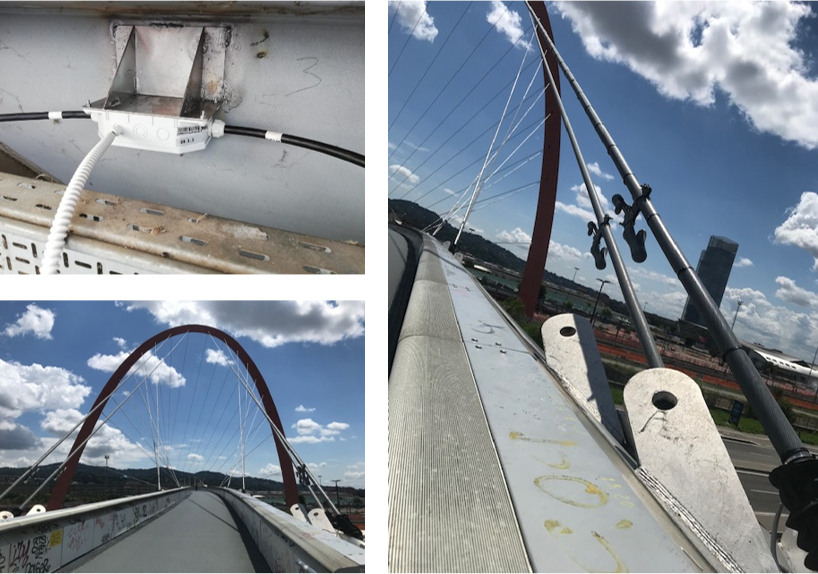Passerella Olimpica (case study)
Object description
(No object description available.)
Object analysis
The Olimpic footbridge has been subject to continuous monitoring since august 2020 as part of a consulting project (Sacertis Ingegneria srl). The assessment has been undertaken due to reliability checks required by the municipality and a monitoring system has been installed to control the structural behaviour over time and optimize the maintenance procedures. A non-linear FE model has been calibrated based on the dynamic characterization (mode shapes and natural frequencies of the stays and the overal structure) and data analytics. The definition of the thresholds, for each sensor of the monitoring system, has been based on the simulation of significant damage scenarios that can cause a significant reduction of the safety and reliability target levels.
Object state
The Olimpic footbridge, built in 2006, has no sign of deterioration or occurring damage processes. The aim of the monitoring system is to control the structural behaviour over time and optimize the maintenance procedures. The Sacertis monitoring system, installed in August 2020, consists of 34 triaxial MEMS accelerometers installed on the deck and on a selection of stays. Prior information available were: drawings and design documents, results of the proof load test, n.2 previous dynamic measuring campaigns. A non-linear FE model has been calibrated based on the dynamic characterization (mode shapes and natural frequencies of the stays and the overall structure) and used to determine the warning and alarm thresholds levels. A near-real time alert system is active on the structure.
Images
Documents
(No documents available for this case study.)
This case study was contributed by Paola Darò of SafeCertifiedStructure Ingegneria S.r.l.. Last edited by technical staff.

